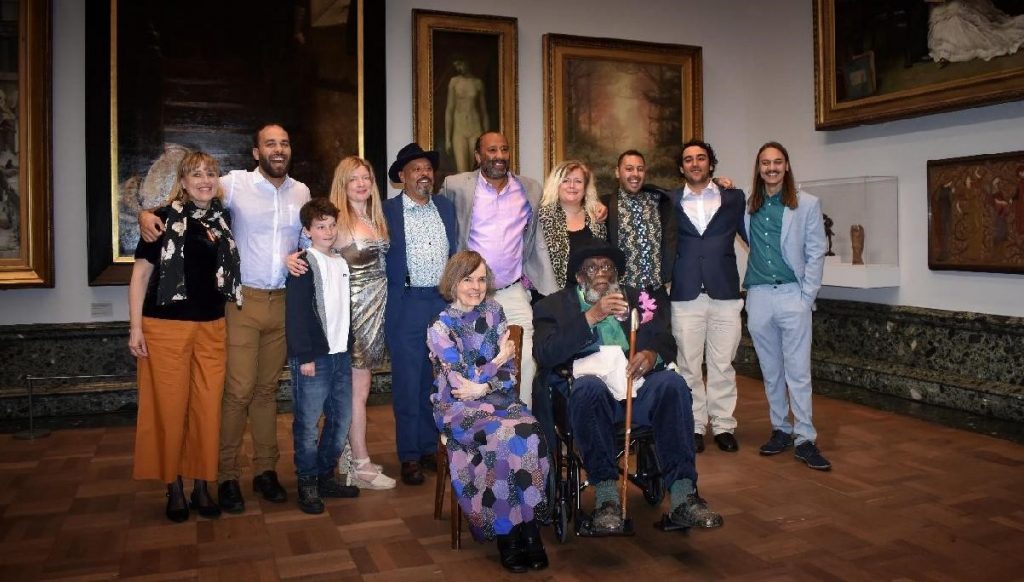Guyana-born Artist Frank Bowling awarded Knighthood in Queen’s Birthday Honours
Guyanese Artist Frank Bowling OBE RA was conferred with the honour of Knight Bachelor by Her Majesty Queen Elizabeth II in the 2020 Birthday Honours List. The Birthday Honours list recognises the achievements of a wide range of extraordinary people across the United Kingdom.
Born in Bartica, British Guiana, he moved to England in 1953.
During his six-decade long career, Bowling’s paintings underpin a lifetime of service to British art.
According to a statement issued on Saturday by a London Communications company, at age 86, he still is an active painter with an irrepressible work ethic, working in his studio almost every day.
Sir Frank says in a short comment noted that he is extremely proud of his achievement.
“To be recognised for my contribution to British painting and art history with a knighthood makes me extremely proud,” he was quoted saying.
The artist said he is thankful for his friends and family who have played a role in his studio since the 1960s.

Sir Frank was trained in the English art school tradition after moving to London in 1953 from what was then British Guiana.
Sir Frank is one of the leading British painters alive today. Over the past sixty years, his large-scale abstract canvases have explored the nature and possibilities of paint and pursued forms of expression, which are both nuanced and open-ended.
In May 2019, a major retrospective of his work, subtitled “The Possibilities of Paint Are Never-Ending”, opened at Tate Britain to outstanding critical acclaim.
Born in Bartica, British Guiana, he moved to England in 1953. After doing his National Service in the Royal Air Force, Bowling went on to study art, winning a scholarship to London’s Royal College of Art in 1959.
His early paintings embedded layers of autobiography in abstraction, incorporating silkscreen images of his home and family members back in Guyana. It was not until moving to New York in 1966 that he made a decisive turn towards abstraction.

The move soon won him two Guggenheim fellowships (1967, 1973), and a solo exhibition at the Whitney Museum of American Art, New York in 1971. With an increasing focus on material, process, and colour, Bowling developed a very personal palette for his large, light-filled, lyrical colour abstractions. It is during this period that Bowling’s seminal ‘Map Paintings’ – a series of colour fields overlaid with stencilled maps of Australia, South America and Africa – was produced.
Known also for his writings on art, particularly in debates around Formalism and ‘Black Art’, he has always vigorously rejected being defined by restrictive labels that sought to pigeonhole him, and in 2005 he became the first Black artist to be elected a Royal Academician.
Ben and Sacha Bowling, the artist’s sons and studio directors say they are delighted at his achievements as “he has shown dedication and dogged persistence in the face of obstacles throughout his life of painting, including having to deal with stereotypical associations made between his work and origins.”
“The whole family is overjoyed at this news. We couldn’t be prouder of all that our father has achieved,” they added.






